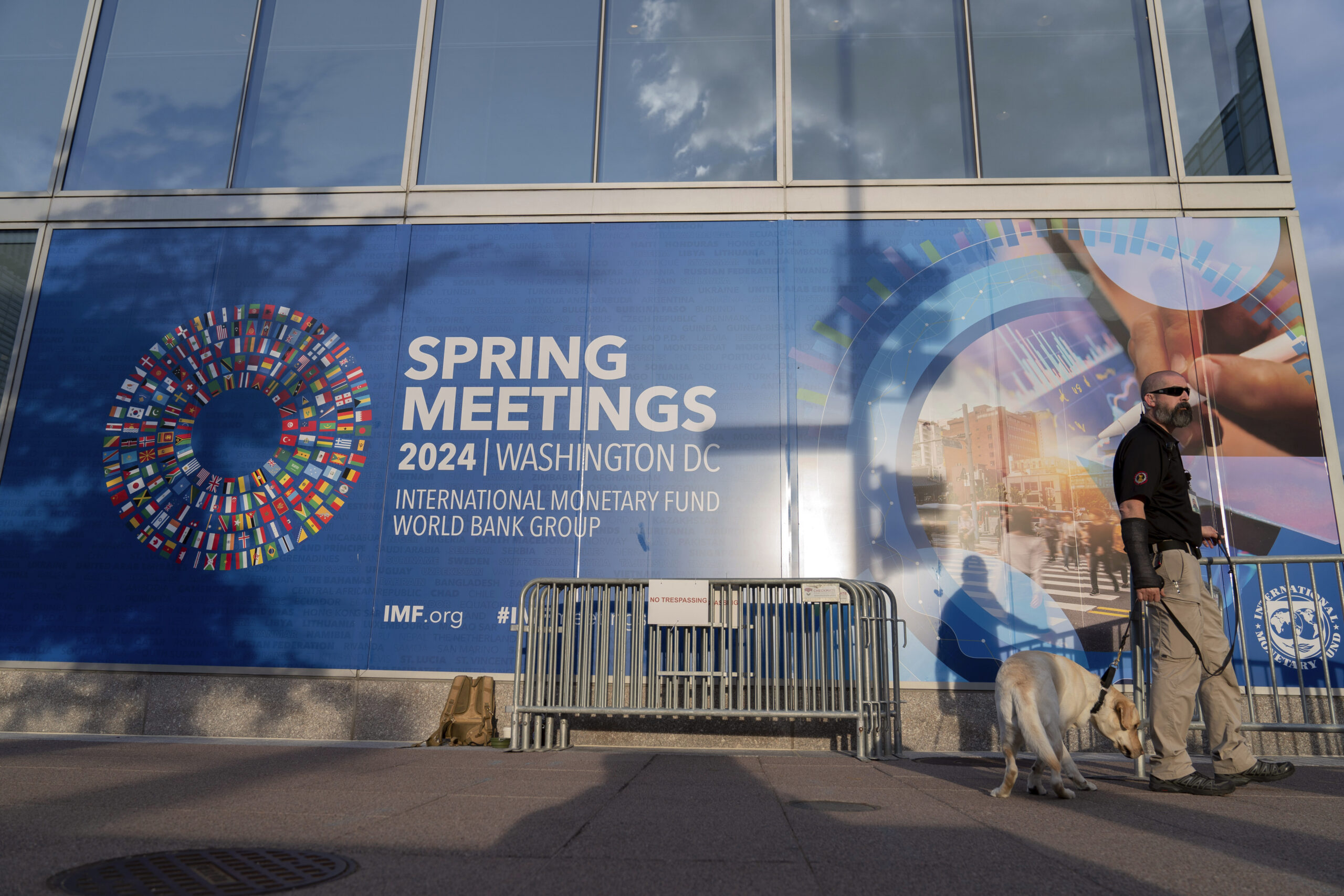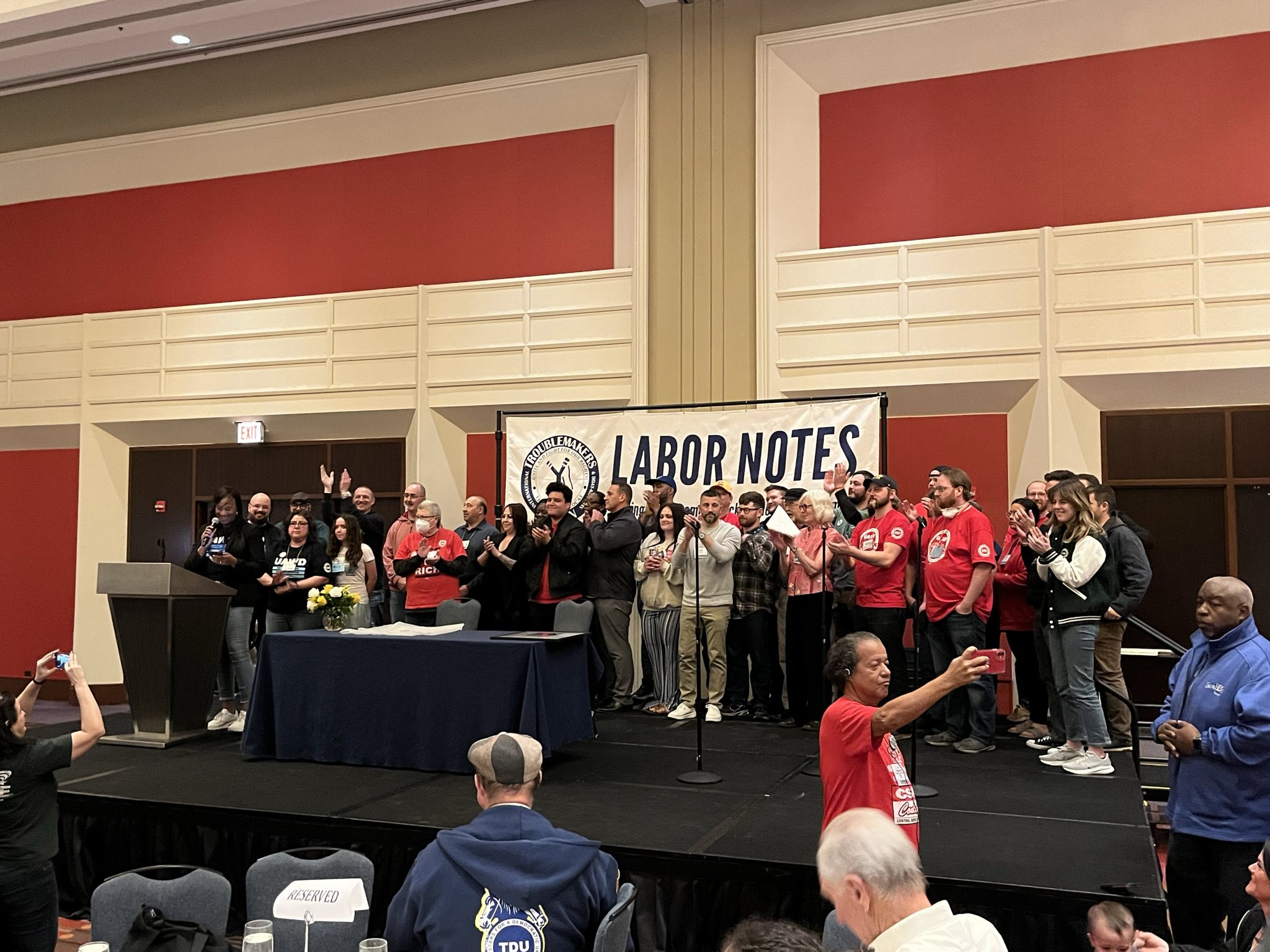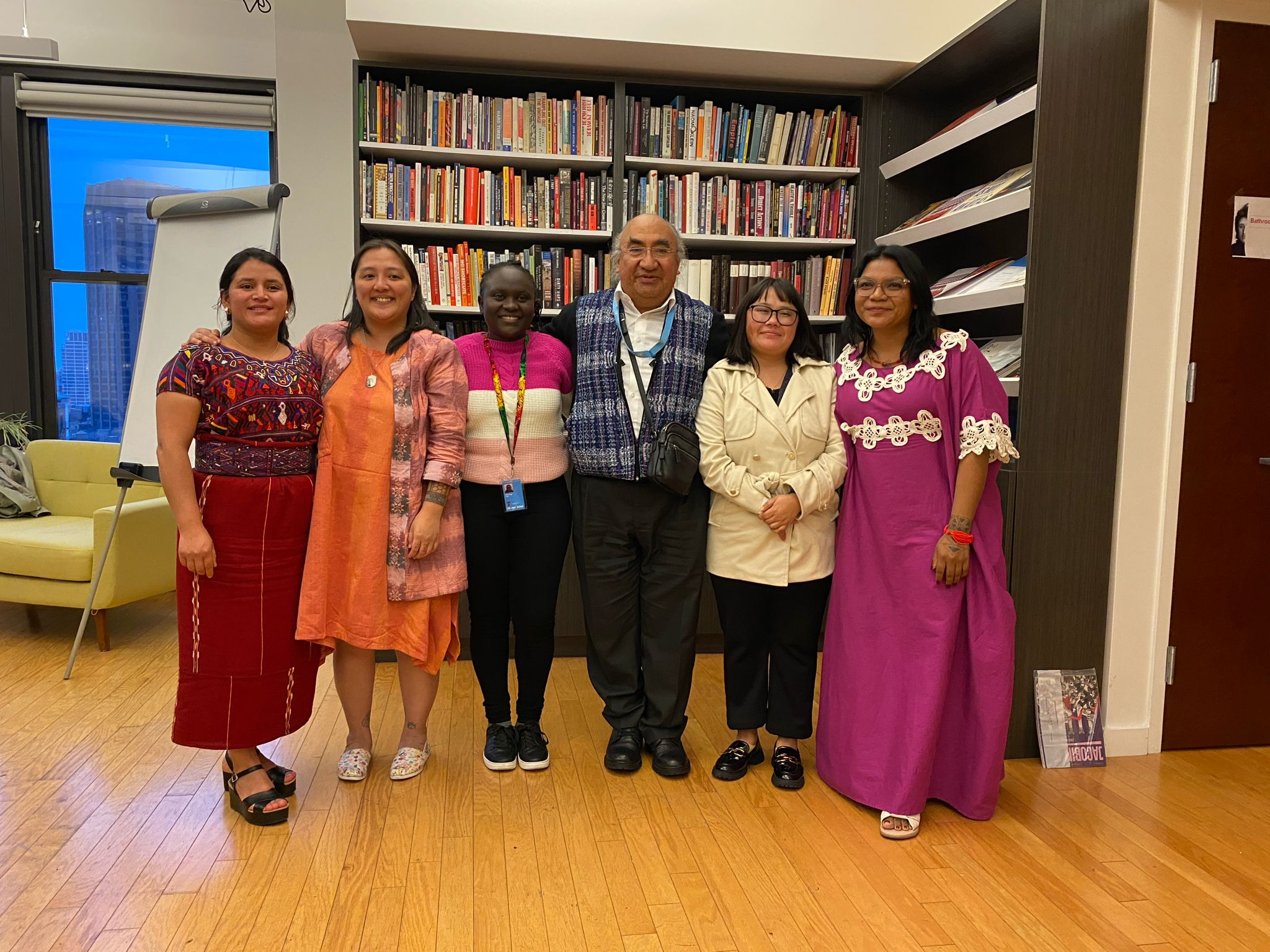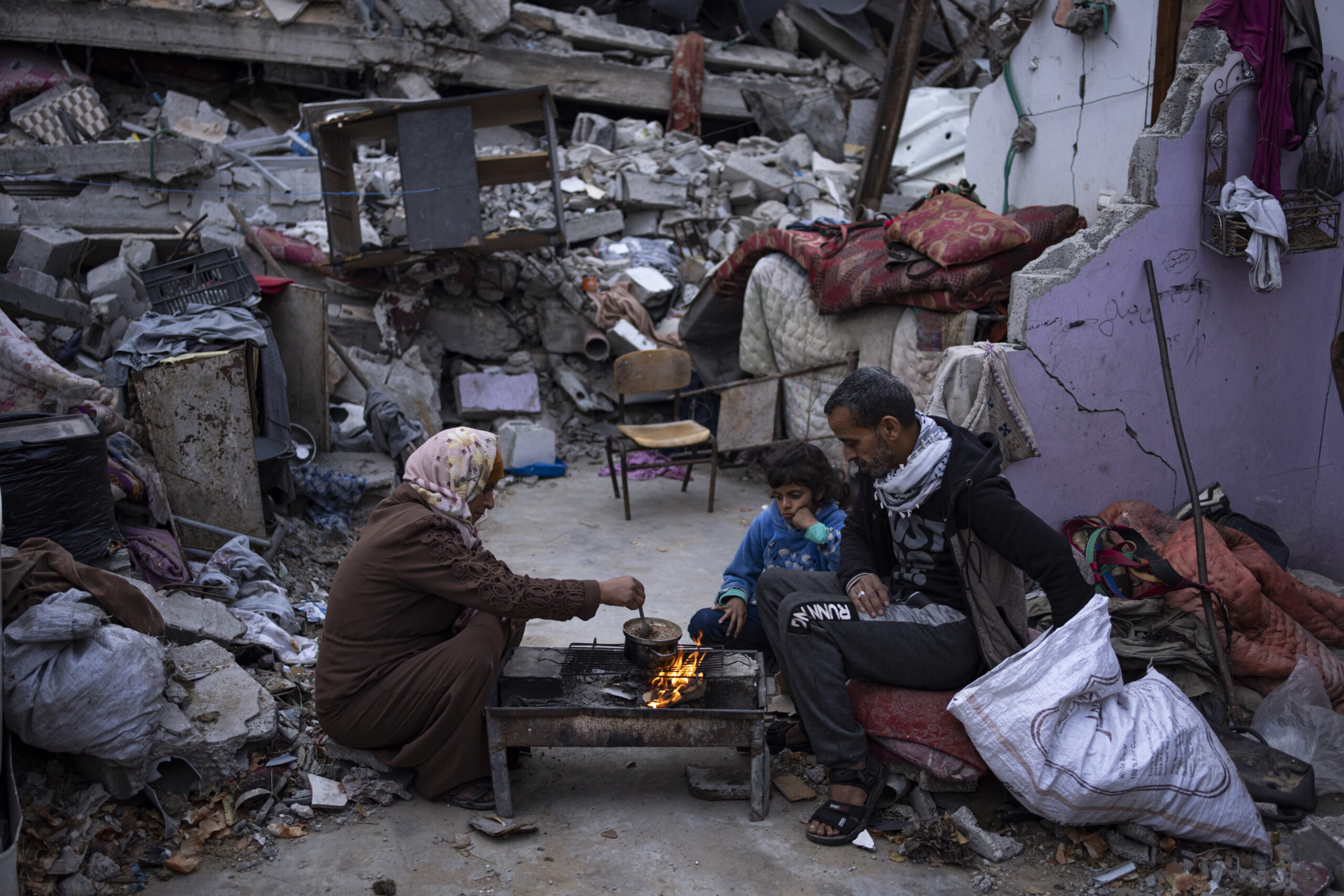The Tk’emlúps te Secwépemc revealed in a press statement on May 27, 2021, that they had used ground penetrating radar to confirm the bodies of 215 children—the youngest 3 years old—in a mass gravesite at the Kamloops Indian Residential School located in Kamloops, BC, Canada.
The Kamloops Indian Residential School was in operation from 1890 to 1969, when the federal government took over administration from the Catholic Church to operate it as a residence for a day school, until closing in 1978… Up to 500 students would have been registered at the school, according to the National Centre for Truth and Reconciliation (NCTR). Those children would have come from First Nations communities across B.C. and beyond.
CBC News
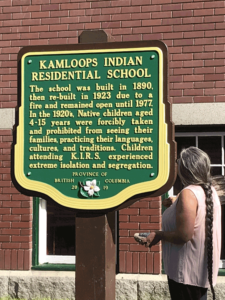
Across the country, a deep feeling of grief, anger and sorrow resonated over social media and beyond, as the news hit home to Indigenous Peoples. People placed 215 shoes as memorials, organized vigils, wrote poetry, ran in commemoration, light sacred fires, and created art to honor our lost children. As people began reacting, a new wave of calls re-emerged for the Government of Canada to name the treatment of Indigenous Peoples by the state as genocide.
Calls for Investigation Were Ignored
These residential schools were in existence before Canada was a country. According to the Truth and Reconciliation Commission (TRC), there were 139 residential schools and residences that were attended by more than 150,000 Indigenous children, and were in operation until the late 1990s. This number does not include schools ran by the provinces, or schools run solely by religious orders that did not receive federal funding.
To be clear, the children that attended were forcibly removed from their families by law, which was enforced by the local Indian Agents and the Royal Canadian Mounted Police (RCMP). They were subject to horrific abuses including sterilization, starvation, medical testing, and spiritual, physical and sexual abuse. Some of the children taken were young as 3 years old. Many of the churches (Roman Catholic, Anglican, United, Methodist and Presbyterian) responsible for administering the schools did not keep accurate records. Of those churches that did, their records have still not been made public, despite the TRC process and numerous requests. The TRC’s Missing Child Project estimates that 4,100 children died of disease or accident while attending the 139 schools. However, due to poor record keeping, that number could be higher.
We do know that there were calls at the time for numerous RCMP investigations into allegations of abuse, which never happened. To date, no one has ever been prosecuted for the deaths and abuse of any of the children that attended the Indian Residential Schools. The parents of the missing children were not contacted by the schools or the RCMP; some still do not know what happened to their children that never returned home.
A Strategic Part of Colonial Settlement
The residential school system was a strategic part of the colonial settlement of Canada—a clearing of the land for incoming settlers so that Canada could rid itself of the “Indian problem.” The residential schools at the time were not subject to national policy or procedures, full control was administered by the churches that ran the schools. Indigenous Peoples went from having full access and freedom on our territories to 0.2% control of land in Canada.
For over a century, the central goals of Canada’s Aboriginal policy were to eliminate Aboriginal governments; ignore Aboriginal rights; terminate the Treaties; and, through a process of assimilation, cause Aboriginal peoples to cease to exist as distinct legal, social, cultural, religious, and racial entities in Canada. (TRC, 2015)
Honouring the Truth, Reconciling for the Future: Summary of the Final Report of the Truth and Reconciliation Commission of Canada
In the reactions to the discovery of the mass gravesite at the Kamloops Indian Residential School, Prime Minister Justin Trudeau has been quoted as saying, “This tragic discovery is a stark reminder of our duty to heal the wounds from this horrific part of our history.”
However, it has been hard for many Indigenous people to reconcile with that statement, myself included. For Indigenous Peoples this is not something in the past; it is our present and it is intergenerational. My younger sisters attended one of the last remaining residential schools in the country in Saskatchewan. Kivalliq Hall in Rankin Inlet, in what’s now Nunavut, was the last residential school to close in 1997. The residential school in my maternal grandmother’s community is still standing. We are still dealing with the impacts of over 160 years of residential schools.
The hardest part for Indigenous Peoples is knowing how much the Canadian government has fought us. The creation of the TRC came after residential school survivors sued the federal government, which was negotiated into becoming the Indian Residential Schools Settlement Agreement (IRSSA). In order to be a claimant in the IRSSA, you had to file and recount your abuse, which was then corroborated with other survivors—if the survivors were “lucky.” However, many did not meet the criteria of the IRSSA, had their claims denied, or the process was too traumatizing to engage in. A literal price was established for the abuse survivors endured, and they were given a compensation cheque.
A Compensation Cheque Is Not Justice
For many survivors, this process forced them to relive the trauma and pain they experienced as children. I wrote my dad’s claim for the IRSSA, and it was triggering for me as his child. I can only imagine what that was like for survivors. Some, like one of my friends, had to attend hearings and recount their story on record. This process did so much damage to many of my relatives and friends.
Many non-Indigenous people I meet consider this process to be reparations. How is that possible? Considering that Indigenous Peoples were not at the decision-making table, we had no power over what reparations would look like for us and our communities. Receiving a compensation cheque was not justice for the survivors. It never will be.
Going back to this idea of “a part of our history,” as Prime Minister Justin Trudeau stated, the reason that many Indigenous Peoples can’t accept his statement is our current reality. Residential schools aren’t ancient history. My nieces and nephews are the first generation in my family to not attend a residential school. In the 1960s and 1970s large numbers of First Nations children were adopted out to non-First Nations homes known as “the 60/70s scoop.” They were given no connection to who they were or where they came from. Many suffered abuse and neglect. Some were adopted out to other countries as far away as the US and Europe. As with the Residential Schools process, survivors of this so-called “scoop” sued Canada and formed a class action lawsuit that is still ongoing.
Between 1951 and 1991, First Nation and Inuit children were taken into care and placed with non-Indigenous parents where they were not raised in accordance with their cultural traditions nor taught their traditional languages. This dark chapter in Canada’s history is commonly referred to as the ‘Sixties Scoop.’ The Class Action argues that those affected by the Sixties Scoop suffered significant harms as a result of these practices–specifically the loss of their cultural identity.
Sixties Scoop Settlement
The legacy of the residential schools continues in the child welfare system: there are currently more Indigenous children in state care than ever attended residential schools. Between 1995 and 2001, the number of First Nations children placed in child welfare care on reserve increased by 71.5%.”
Focusing on First Nations Families
Cindy Blackstock has become a national hero for advocating for the rights of Indigenous Children in Canada. Her work helped create Jordan’s Principle, a child-first principle calling on the government to ensure all First Nations children can access public services on the same terms as other children.
Jordan River Anderson was a First Nations child from Norway Cree House Nation in Manitoba. Born in 1999 with complex medical needs that could not be treated on-reserve, he spent more than two years in a hospital in Winnipeg before doctors agreed that he could leave the hospital to be cared for in a family home. However, because of jurisdictional disputes within and between the federal and provincial governments over who would pay costs for in-home care, Jordan spent over two more years in hospital unnecessarily before he tragically died in 2005. He was 5 years old and had never spent a day in a family home.
First Nations Child & Family Caring Society of Canada
Indigenous children have been neglected and abused by the state of Canada since its inception. It took taking Jordan’s Principle to the Canadian Human Rights Tribunal for Canada to be held responsible for discrimination, adverse impacts, gross underfunding, and service gaps of the First Nations Child and Family Services (FNCFS – the on-reserve child welfare agency run by the Canadian department of Indian Affairs). This included incentivizing the removal of First Nations children from their families and communities.
To date, the Canadian government has been fighting the Canadian Human Rights Tribunal’s findings in court. Very few of the requirements set out by the Tribunal have yet to be met fully.
A Call to Action
Indigenous women, girls and Two-Spirit, lesbian, gay, bisexual, transgender, queer and questioning people – 2SLGBTQQIA – go missing more than any other group in Canada. The National Inquiry into Missing and Murdered Indigenous Women and Girls (MMIW) in its final report, “Reclaiming Power and Place: The Final Report of the National Inquiry into Missing and Murdered Indigenous Women and Girls,” made 231 calls to action. To date, the Canadian government has yet to implement its action plan due to the COVID-19 pandemic (or so they say). However, the pandemic is making conditions for Indigenous women, girls and 2SLGBTQQIA worse.
For many decades now, there have been Inquiries, and Commissions that have produced recommendations to address the structural racism and colonial policies which have been impacting Indigenous Peoples since Canada has existed. These include the Royal Commission on Aboriginal Peoples (RCAP) that in 1991 was mandated to create recommendations to improve the relationship between Canada and Aboriginal Peoples. RCAP submitted its final report in 1996 with 440 recommendations:
If one theme dominates our recommendations, it is that Aboriginal peoples must have room to exercise their autonomy and structure their own solutions. The pattern of debilitating and discriminatory paternalism that has characterized federal policy for the past 150 years must end. Aboriginal people cannot flourish if they are treated as wards, incapable of controlling their own destiny.
Report of the Royal Commission on Aboriginal Peoples: Volume 5 – Renewal: A Twenty-Year Commitment
However, Canada has yet to implement many of the deep structural changes necessary to stop the violence it inflicts on Indigenous Peoples as a whole.
There have been many legal attempts to hold Canada accountable for the rights of Indigenous Peoples it has continuously violated. According to an Aboriginal Peoples Television Network article, the Trudeau government has spent almost 100 million CAD fighting Indigenous Peoples in court. The Canadian government has said it will spend 2.2 billion CAD to address the root causes of MMIW, but has not released any concrete timeline or action plan for spending that money.
Time and time again, Indigenous Peoples have won Supreme Court challenges against the government. But the rights we have as Indigenous Peoples to even exist on what is remaining of our own lands are continually violated. Our children, our most precious resource, continue to be taken away from us at alarming rates. In every facet of Indigenous life, we are fighting to hold onto our lives.
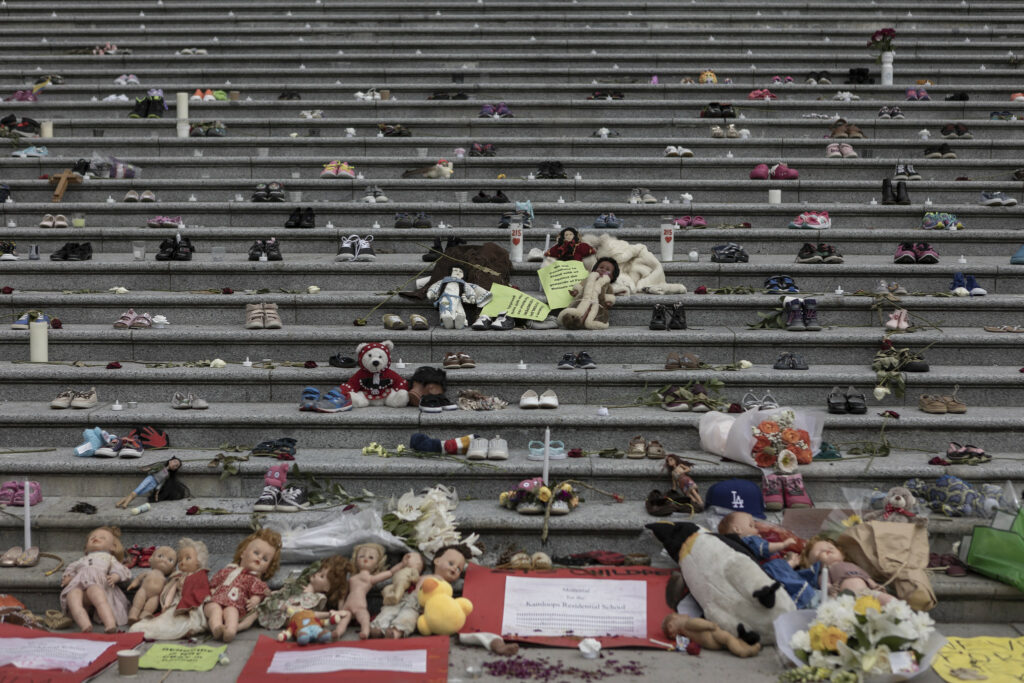
It has been tireless advocates like Cindy Blackstock who have made a difference for Indigenous Peoples. It is the community organizers, land defenders, the Indigenous social workers, after school program workers, teachers, the community watch patrols like Bear Clan, language speakers, social service organizations, ceremonial leaders, water protectors, knowledge keepers, and First Nations communities that have been responsible for the healing happening in our communities. It is those people working tirelessly in the background upholding our communities that are the ones creating change. Oftentimes, these grassroots leaders are women, girls and 2SLGBTQQIA people.
Fighting the Canadian Legacy of Genocide
As the days go by, we all have been digesting the meaning of mass gravesites that continue to be uncovered. To date just over 1,300 children have been found, however as testing continues, this number will continue to climb. We knew the stories of the horrors, much of which has been documented through the TRC process, but it doesn’t make the uncovering of mass graves of our relatives, any easier. We cry for those babies that did not make it home and died alone. It is the deepest collective sorrow we are enduring. The children buried in these graves represent the horror of being Indigenous in Canada. Many people and communities have held ceremonies not only for the lost children, but for our future generations, hoping that this will be the end of the legacy of residential schools.
My older brother and I are “60/70’s scoop” survivors. My mom’s generation and those before her went to residential schools. Many of my brothers and sisters were in and out of child welfare systems. One of my uncles was murdered, as was one of my little sister’s best friends. The Canadian legacy of genocide has affected every one of my family members, every last one.
In spite of everything that has happened, I am proud for my relatives’ healing. For not giving up. For our communities to be open, honest and vulnerable as we hurt for these children. For their parents and grandparents who never knew what happened to them. I am proud that my relatives are working hard to be the parents our ancestors never got to be and to see new generations rise up that are stronger, smarter and better than we are.
Alongside Indigenous Peoples, we must continue to call the treatment of Indigenous Peoples in Canada genocide. It is critical to continue to pressure Canada on the world stage to uphold the rights of Indigenous Peoples for future generations. Maybe if Canada had implemented the recommendations from RCAP, MMIW, TRC and so many other processes that Indigenous Peoples have engaged in to seek justice we would not be in the place we are now.
As many survivors have advocated for, an apology from the Pope and releasing of the many church residential school records could go a long way toward reconciliation, remedy and healing – including implementing the 94 TRC calls to action. Prosecution of those that harmed Indigenous children is critical, since residential schools are not in our distant history, as many of these perpetrators are still alive, well and protected: unlike the 215 children buried at Kamloops Indian Residential School. If we are truly to have reparations from the state, Indigenous Peoples need to decide the terms in which we meet with the Canadian government: Nation to Nation.
Finally, I think it speaks volumes that our people, despite all the atrocities and acts of genocide, continue to carry hope. We do not seek revenge or wish what happened to us to happen to any future generations. Through our collective grief, we know change is coming.
Heather Milton-Lightening is an activist with more than 20 years of organizing experience on the local and international level.
